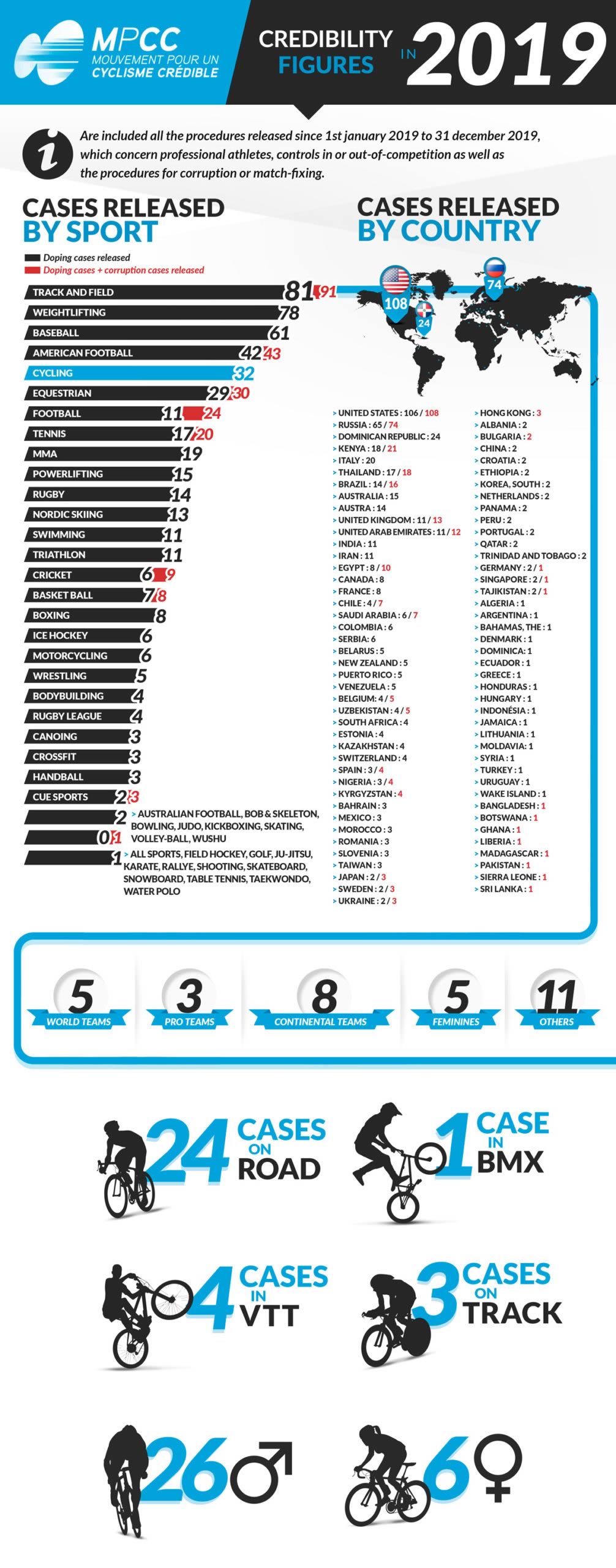The number of doping cases revealed in 2019 amongst cycling’s professional elites has nearly doubled in the span of one year. The MPCC takes it as a serious warning.
Since the creation of our credibility barometer six years ago, cycling figures had never been this alarming.
A year ago, we were writing that data for cycling doping, from one year to the next, was not suggesting any real trend in the medium term, unlike other sports where an ever-increasing number of cases were revealed. This year, we’re noting a clear break with the recent past. This sudden increase was equally observed in men’s and women’s cycling, whether it was track cycling or road cycling (all things considered). While cycling had kept plummeting in the list of sports most affected by doping, it rose again from 13th to 5th in the span of just one year.
2019 was marked by Operation Aderlass, which revealed the existence of an international blood doping network involving several sports and most particularly cycling. It is not out of the question that further names are revealed soon in addition to the 7 known cases in our sport (6 men and 1 woman). This police operation — carried out in close conjunction with the investigators from WADA (World Anti-Doping Agency) — alone does not explain the skyrocketing in the number of infractions. Furthermore, it served as a reminder that doping can spiral into all teams, including those committed to MPCC.
Two hypotheses are being used as explanation for those many doping cases in 2019: first, a renewed interest in doping; second, better targeted doping tests.
2019 was also marked by the decision to ban Russia from all major sporting events (Olympics and World Championships, notably) for four years over doping violations. Although this ban imposed by WADA — and contested by Russia — still needs to be confirmed by the Court of Arbitration for Sport, there is no country talked about so often on account of doping scandals in two different sports: athletics (21 doping cases and 9 cases of fraud from executives) and weightlifting (16 doping cases). Those two sports alone represent 60% of the procedures that were made public this year in Russia.
In the United States, American football (39 cases) and baseball (27 cases) combine to account for more than half of the damage done to the credibility of sport. The United States still ranks first in our standings for the 4th consecutive year while Italy, the most affected nation in Europe and overall 5th in our standings, has seen their number of procedures gone public cut by half in 2019, compared to the previous two years.

